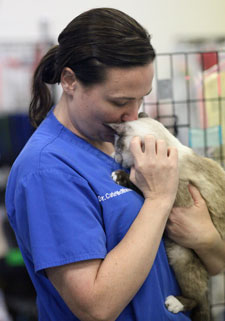
In June, approximately 550 cats were taken from an owner in Florida. They were cared for and vetted and are now available for adoption. This massive undertaking is being coordinated by a number of animal welfare groups including Maddie’s Shelter Medicine Program, HSUS, Alachua Co Animal Services and PetSmart Charities. Let’s help get eyeballs on this mass adoption event in Gainesville, FL because this is what we want to happen for rescued pets – to be cared for and adopted out to the public. More like this, please.
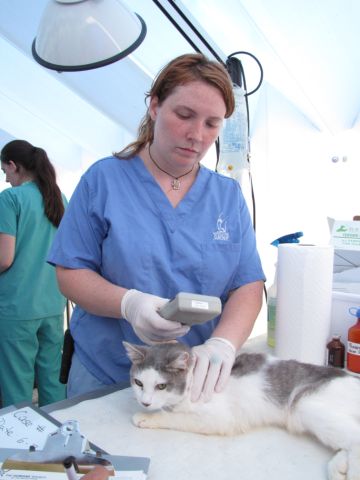
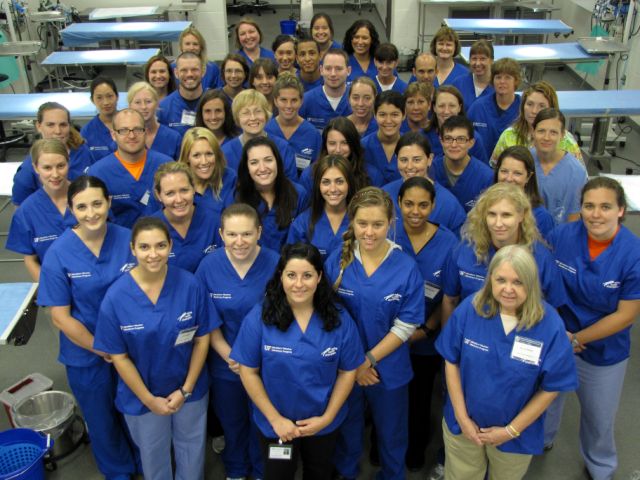
When: Friday through Sunday, August 25 – 27, 10am – 6pm
Where: Alachua Co Humane Society (with transportation provided to offsite adoption location)
Who: Any and all cat lovers who can get there
Bring: ID, cash, cat carrier
How much: $5 adoption fee per cat, 2 cats per household
What you get for your $5:
- Cats have been neutered, vax’d, FeLV/FIV tested, dewormed, de-flea’d and come with vet records.
- There will be people to help match adopters with cats so tell them what you are looking for in a feline friend.
- Whisker kisses for life.
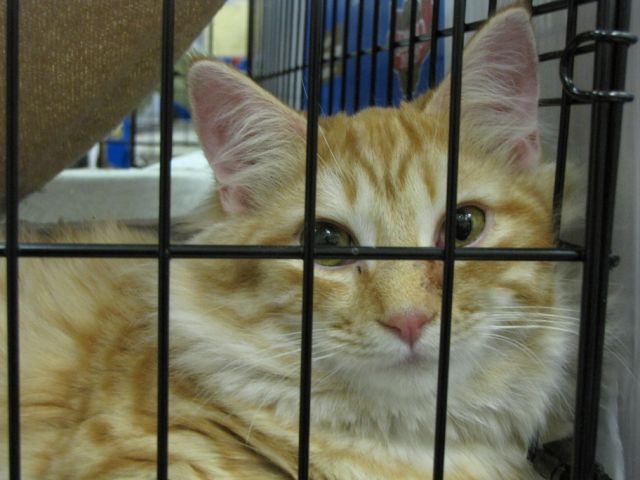
Photos and captions provided by Dr. Julie Levy, who has been helping to care for these cats all summer.

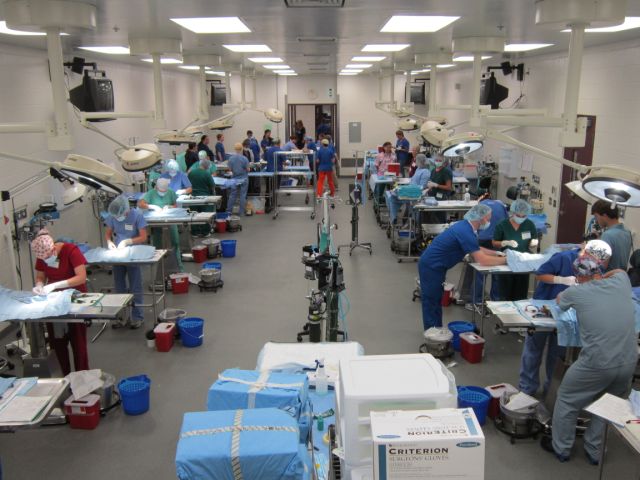
What a wonderful way to start my week! THIS IS THE WAY IT IS SUPPOSED TO BE DONE! Thanks for getting the word out there! Will share with the other sites I visit.
LikeLike
Some folks may be full of warm fuzzies over this story but as always when it comes to stories out of Florida, there is more than meets the eye.
LikeLike
Well come on and share with the class Susan!
LikeLike
This is what I am seeing the truth as. PETA is big down here right now and is making their presence known either w/HSUS or alone in several areas of Florida. Folks had better be getting their proverbial ducks in a row on this but it’s fixing on getting nasty anyway … this was a sanctuary, clearly different than hoarding by cat individuals. These people were granted a permit by the county commission for -200- cats and that permit had been renewed over several years complete WITH frequent inspections. County Code enforcement had inspected and -passed- this facility on April 7, just 60 days before the raid. When told to reduce the number of cats at the facility they DID, only to have the public and other rescue org’s continue to drop off their unwanted animals assuming they would be spared euthanasia. A week after the seizure, over 90% of the problems at the sanctuary had been taken care of, and after 2 weeks almost 99% of the complaints had been addressed – read the report here:
http://tinyurl.com/3dykasz
The owners were not charged until two -months- after the seizure. Fact- PETA and HSUS are now attempting to blame the ‘no kill movement’ for what they call a ‘proliferation of rescue hoarders’ and are claiming that euthanasia is still a better alternative:
http://tinyurl.com/3s7efwq
LikeLike
The reports indicate the couple did a very good job cleaning the place up. It sounds like, whatever the reasons, they weren’t able to comply with the numbers they had the permit for and that most of the cats were intact. At least some of the cats appeared to be in need of other vet care as well. Perhaps a situation where a couple is well-intentioned but became overwhelmed? IDK much about the case.
At any rate, an important aspect of the case for me is that, once the cats were signed over, they are being offered for adoption. This is huge, especially considering HSUS is involved. I hope justice is served for the couple – in whatever legal terms that may be – but the bottom line for the cats is they were signed over and are in need of homes. I’d like to see that happen for them.
LikeLike
Perhaps a situation where a couple is well-intentioned but became overwhelmed? IDK much about the case.
——————
I think that is very possible and I have *heard* — here-say I know — that the area around them had become very populated and neighbors just wanted them gone.
LikeLike
A cat sanctuary with over 300 cats unfixed? Sounds like they were short on funds and help. Wish the sanctuary had received more help when the cats were there.
Many rescues and sanctuaries do not know how to fund raise or how to gain enough media attention to make their organizations more successful. Many more community animals could be saved if more animal rescue orgs put more effort into these areas.
LikeLike
In addition, many rescues/sanctuaries get put into impossible situations because the public tolerates the killing at the municipal facility and yet won’t bring pets in need there because they don’t want them called. Rescues and sanctuaries are expected to take up the municipal facility’s slack without the tax dollars or the ability to set city policies.
LikeLike
Typical response from yesbiscuit, as expected. Pffft.
LikeLike
I’m 100% in favor of implementing no-kill (including managed TNR ) at every shelter in the country, but I have mixed feelings about sanctuaries. It’s not natural for 50 cats to live in the same place, much less 100 or 200 or 300. Cats like to live in small groups and enjoy spreading out over their territory and then meeting up for socializing, hunting, mating, raising kittens, etc. when they feel like it (lawl, or nature compels). Putting very large numbers of cats together is like sending an invitation to some very nasty viral diseases, parasites, etc. Very stressful for the kitties. Five groups of 20 cats in TNR beats one sanctuary with 100 any day. So maybe the FL kitties are going to be better off in homes rather than in a huge population at an underfunded sanctuary.
LikeLike
I think it depends on the amount of space and how things are handled. At the very least, they all need to be neutered/spayed. I’m hoping for some really good homes for these cats and kittens. I didn’t read the links about the original sanctuary, but I’m delighted that this didn’t result in mass killing, as it so often does.
LikeLike
Sanctuary…that’s supposed to be a good thing, right? I hope people turn up in droves to adopt all these cats because if HSUS and PETA are involved, any *leftovers* are looking at a death sentence.
My vote is that life is better than death. We don’t have feral cats in Alaska because mother nature culls for us. We have a few sanctuaries…and a few hoarders. My issue is with those who don’t spay/neuter and the few turn into WAY too many. Although with our local SNYP program, its getting harder to find a kitty to adopt! (Yea!!!)
LikeLike
Nice problem to have – a shortage of cats to adopt . . .
LikeLike
I know! Although there are still plenty of adult cats, kittens are more rare. The other piece to this puzzle is that there ARE a few groups of feral cats (that are *managed*…but not very well) These feral groups are not spayed/neutered, so they’re producing feral kittens. Those hoping to adopt a kitten often end up needing to socialize a feral born little one–which can be a challenge. (If it can be live-trapped in a timely fashion.)
LikeLike
That huge spay and neuter operation there is fucking awesome. Just awesome. I wish I could hug each and every one of those people and tell them how wonderful they are.
LikeLike
Much of the actual work for the cats in this case was provided by the volunteers of Red Rover, formerly United Animal Nations – they were the ones who provided the temporary shelters, crates, and daily care. Unfortunately their Emergency Response Blog has been removed, I assume a temporary casualty of their – very recent – name change.
In any event, here’s video from the move: http://www.youtube.com/watch?v=K1FqYmKpSVU&feature=related
… and a news segment on it, which actually shows the Red Rover crew: http://www.youtube.com/watch?v=GxkAxIJT1Cw&feature=share
It’s my impression from videos, articles and the now-lost blog, that this was … not just a matter of disgruntled neighbors, or animal rights politics. Cats were truly suffering in this situation, and a place that had – perhaps – resources to handle 200 was … utterly overwhelmed with close to 700.
The blind kitty at the end of the first video, btw, Possum, is now in the family of one of the Red Rover volunteers.
LikeLike
HSUS shill Sarah Barnett admitted that HSUS is planning a special fundraising campaign to defray the costs (supposedly $400,000) of “rescuing and sheltering” these cats.
I urge people to contribute to the well-run Red Rover, to compensate for all the credit and related donations HSUS has stolen from them over the years.
LikeLike
Since the U of F has provided/preformed all the s/n of these cats and probably a large part of the medical care too it might be nice to throw some their way too.
LikeLike
Wrong – Possum was adopted by one of the UF veterinarians. The crates and equipment were provided by Petsmart Charities. Red Rover volunteers were onsight (they’re great!), along with hundreds of other volunteers from many organizations, throughout the entire deployment.
LikeLike
i never understand why big groups and local pet lovers don’t rally to help these rescues while they’re struggling. i heard that puffy paws kitty haven was having a hard time and i offered to start writing grants for them. where are all the animal lovers in sarasota and charlotte county? why am i doing more from california than any of them? these are horrible times. people who claim to care need to jump in.
LikeLike